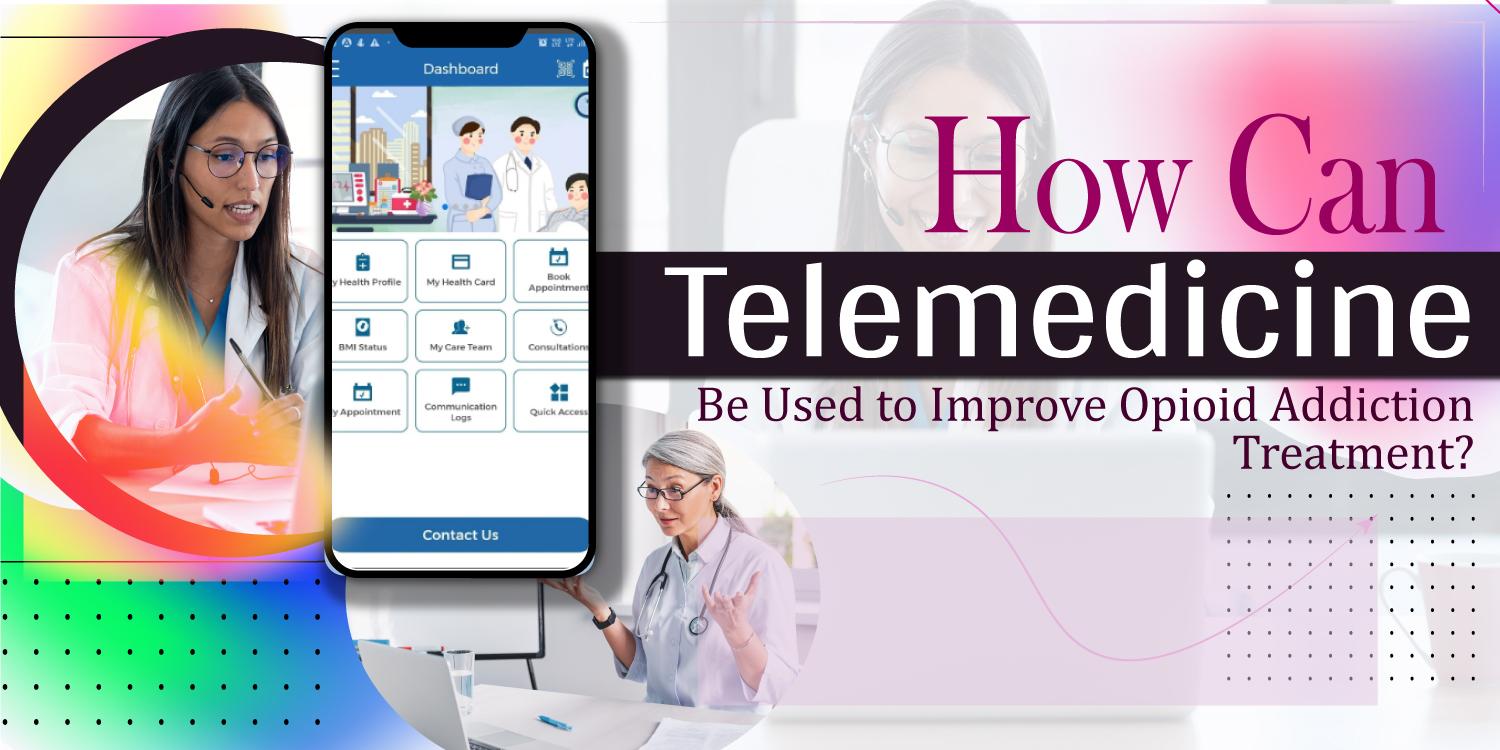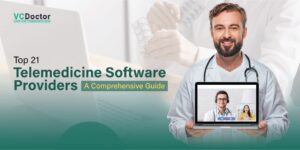How Can Telemedicine be Used to Improve Opioid Addiction Treatment?
Much of the United States is still being devastated by the opioid epidemic. The National Institute on Drug Abuse estimates that 128 individuals pass away from opioid overdoses each day. Opioids are frequently provided to people with chronic pain, but many medications have addictive qualities that can result in misuse and even overdose. Thus, opioid addiction treatment comes to the plate.
The use of this medicine has put new limitations in place as a result of the pandemic. To ensure that their patients are not abusing these medications. They must follow specific health and safety laws when prescribing medication. However, many patients, particularly those in rural regions, frequently don’t access healthcare professionals who can appropriately prescribe these medications.
Several providers are turning to telemedicine services to increase the scope of their addiction treatment services. As patients gradually unplug themselves off opioids and safely manage their pain. Virtual care technology enables doctors to keep an eye on them from a distance.
Treating OUD Recovery Patients By Telehealth Services
To lower the number of people suffering from what is known as opioid use disorder, the healthcare sector is working (OUD). There are indications that the nation is developing. According to recent statistics, many more people than just a few years ago are receiving OUD treatment. Indicating that sufferers are now receiving the support they require for pain management and addiction recovery. The government has also planned online opioid addiction treatment to recover more and more patients.
These people frequently get medically assisted treatment (MAT) when recovering from OUD. Providers prescribe buprenorphine as a standard part of the healing process. This medicine is essential to the opioid addiction treatment process since it can treat pain and opioid pain reliever addiction.
How Telehealth Can Increase Access to MAT
Many patients still struggle to access these essential services, especially those who live in remote locations. There are typically fewer primary care doctors, programs for addiction recovery, and specialists in treating chronic pain in these places. The federal government is attempting to address these problems by boosting financing for MAT programs raising provider and patient awareness. Altering payment procedures to increase coverage, and providing technical help and training.
Telehealth is a tool that providers can use to expand their OUD treatment services. Patients can access these services in the convenience of their homes rather than making long trips to the closest treatment facility. Many of these individuals might experience persistent discomfort, which may restrict their range of motion. These patients can now more easily access addiction therapy because of telehealth technology. Long-distance travel, finding transportation, or taking time off work are no longer concerns.
To remotely prescribe buprenorphine, providers must comply with Drug Enforcement Agency and U.S. Department of Health and Human Services policies. The government is working to increase the availability of telemedicine services to patients and providers. With the aid of this technology, qualified healthcare professionals can now prescribe buprenorphine to patients. Outside of opioid treatment programs are subject to federal regulation.
Healthcare providers have access to telehealth to safely monitor their patients as they recover from OUD at home. They can ensure that these people responsibly use buprenorphine to address their pain rather than turning to opiates or heroin.
The Sensitive Nature of OUD
There are numerous ways to cure addiction. Before treating patients for OUD, providers should take the time to get to know them, hear their concerns, and diagnose their pain. For some patients, discussing these topics can be difficult and uncomfortable. These patients can remain at home, where they feel more at ease discussing addiction, recovery, and what it’s like to have chronic pain.
Additionally, it raises the likelihood that they may turn to legal drug alternatives like heroin rather than seeking addiction therapy and treatment. Patients can use telemedicine platforms to stay in touch with their doctors during the healing process. Access to treatment programs is often limited, making getting well more difficult. Instead of relying on friends and family or trying to handle withdrawal symptoms alone, a patient can instantly get in touch with a health care provider.
Identifying Substance Use Disorder Visits
There are two methods to categorize every telemedicine visit:
- In the beginning, we searched for Healthcare Common Procedure Coding System (HCPCS) codes for outpatient or inpatient visits that contained a unique modifier code for telemedicine (GT, GQ, or 95).
- Second, we found G0425-7 (emergency department or initial inpatient telehealth consultations), G0406-8 (follow-up inpatient or skilled nursing facility telehealth consultations), and G0459 (telemedicine-specific procedural codes) to be telemedicine-specific (pharmacologic management service furnished via telehealth to inpatients).
- While the other codes described above imply synchronous (that is, live video) contacts, claims with the GQ modifier suggest asynchronously (that is, interactions where the patient submits information and the clinician answers when time permits) interactions between a clinician and patient.
- If the telemedicine claim had a primary diagnosis of SUD, SUD treatment was deemed to be the primary objective of the visit (and the visit was therefore deemed a tele-SUD visit). Additionally, if the claim for the visit had a primary diagnosis of mental disease. We regarded the appointment as primarily a telemental health visit (ICD-9 codes 295–302, 306–309, and 311–316; ICD-10 codes F20–F69 and F80–F99). We expanded the definition of a tele-SUD visit in a sensitivity analysis to encompass all telemedicine visits with a SUD diagnosis in any diagnosis sector.
Using place-of-service codes, we identified tele-SUD visits delivered in inpatient (including hospitals, skilled nursing facilities, and emergency departments) versus outpatient settings. We also distinguished psychotherapy visits from other types of tele-SUD care using Current Procedural Terminology (CPT) codes.
Limitations
The Followings are Some Limitations
- Even though we researched tele-SUD among beneficiaries of one of the biggest insurers in the US, our findings might not apply to other insured groups, like those covered by Medicaid or other types of government insurance.
- We probably underestimated the availability of tele-SUD and other SUD services in this cohort since SUD is frequently under-coded in administrative claims data. Similarly, as we used diagnosis codes in claims data to identify patients with SUD, we could not include people whose illness was not recognized and coded in claims.
- Since we relied on claims data to detect tele-SUD use. We could not spot any tele-SUD visits that the provider failed to submit for payment or that were mistakenly recorded as in-person visits.
- The percentage of tele-SUD appointments that concentrated on medication management during the study period was unknown due to modifications made to the CPT codes for outpatient visits in 2013. We distinguished between visits to the doctor and a psychotherapist, although we do not know when medication management occurred during non-psychotherapy visits.
We may have underestimated the number of participants with more severe presentations of both disorders. Because claims data do not include information on whether an illness is debilitating. Therefore, our definitions of severe SUD and severe mental illness relied on diagnostic coding by doctors.
Digital Resources for Recovery By Telehealth Solution
Professionals who treat substance use disorders also use digital tools to support individualized treatment regimens, such as text messaging or smartphone applications.
There isn’t much data to support the usefulness of digital recovery assistance services. Research on a single smartphone app revealed fewer days when drinking was dangerous and higher abstinence rates than standard care.
Research on a different mobile app revealed less risky drinking days and daily drinks. Additionally, messaging therapies using mobile device apps have generated favorable effects.
Does every software of VCDoctor follow HIPAA compliance?
Every medical or healthcare software abides by the HIPAA compliance rules and regulations. You can get a consultation on this from here.
Request a QuoteConclusion
Because substance use problems are chronic, there must be ways for physicians to maintain contact with their patients over extended periods. The telemedicine platform can expand access to addiction treatment programs by reducing geographic and social stigma hurdles. Telemedicine is underutilized in addiction treatment facilities despite having a lot of potential to help individuals with substance use disorders recover and treat them.
In this blog, we have discussed how telemedicine is used to improve opioid addiction treatment. We also mentioned the limitations and processes to identify SUD. We hope that the blog will be helpful for you. To collect more information you can visit our website vcdoctor.com.




